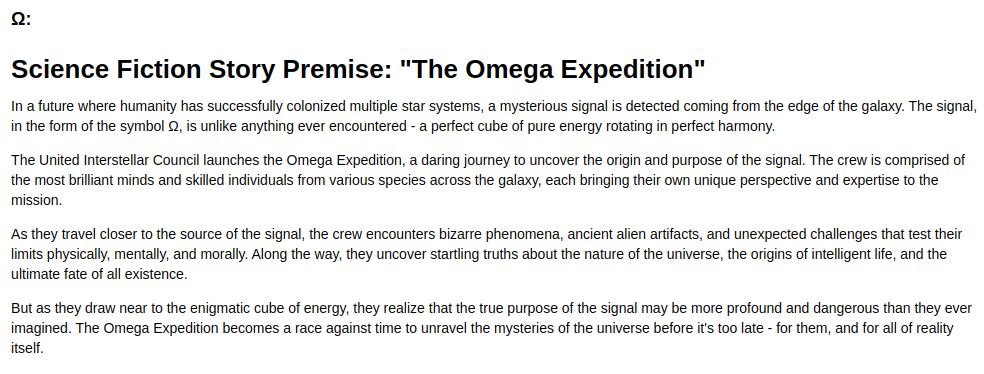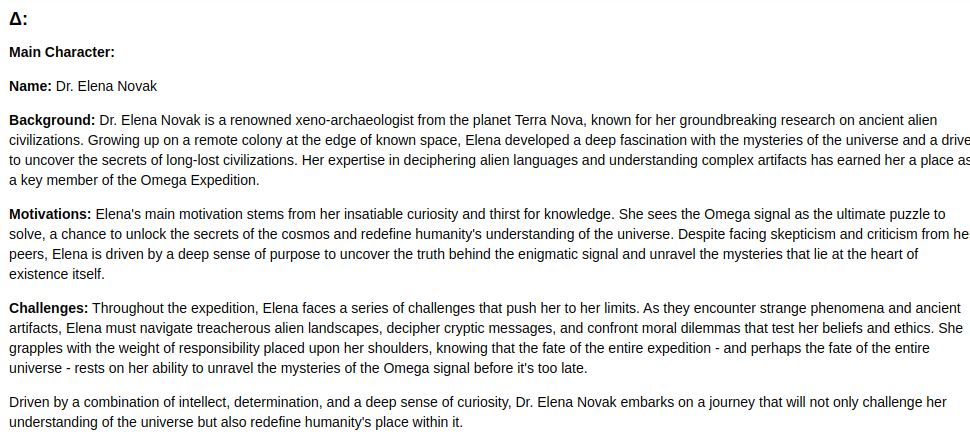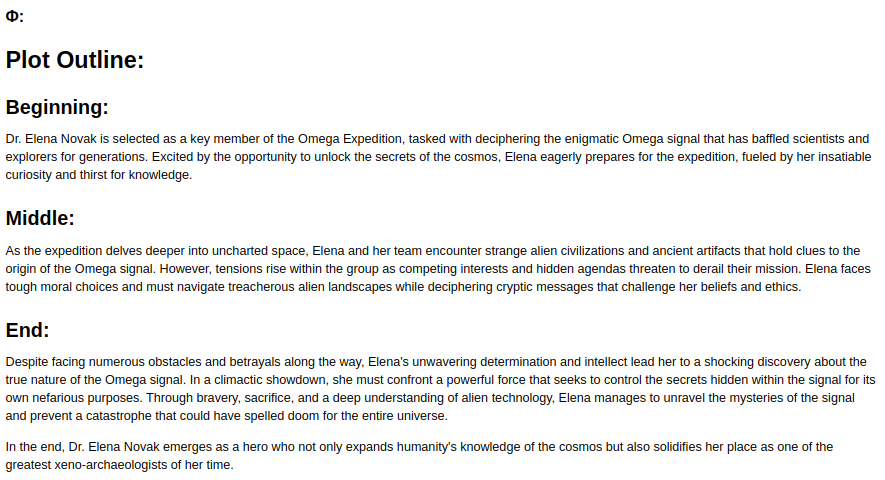Introduction
When it comes to working with Large Language Models (LLMs) like GPT-3 or GPT-4, prompt engineering is a game-changer. Have you ever wondered how to make your interactions with AI more detailed and organized? Enter the Chain of Symbol method—a cutting-edge technique designed to do just that. In this paper, we’ll dive into what this method is all about, how you can use it, and how it can enhance your AI-powered tasks. Let’s explore this fascinating approach together!

Overview
- Understand the concept and structure of the Chain of Symbol technique in prompt engineering.
- Implement a basic Chain of Symbol approach using Python and an AI API (e.g., OpenAI’s GPT models).
- Analyze the benefits and challenges of using the Chain of Symbol method for complex AI tasks.
- Design a Chain of Symbol structure for a specific application, such as story generation or problem-solving.
- Evaluate the effectiveness of the Chain of Symbol approach compared to traditional prompt engineering methods.
Table of contents
Understanding the Chain of Symbol Concept
In prompt engineering, the phrase “Chain of Symbol” describes a prompt structuring technique that uses a sequence of symbolic representations to direct the AI’s response. This technique makes multi-step reasoning and task completion possible and provides more exact control over the output.
The fundamental concept is to divide an intricate undertaking into more manageable segments, each denoted by a symbol. These symbols guide the AI through a certain process or cognitive process by serving as anchors or checkpoints within the prompt.
Key Components of Chain of Symbol
- Symbols: distinct markers for every idea or phase in the sequence.
- Instructions: Clearly defined instructions linked to every symbol.
- Context: Background details or limitations for every action.
- Placeholders for Output: Specific spaces where the AI can enter its answers.
Implementing Chain of Symbol
Installation of dependencies
!pip install openai --upgrade
#Importing libraries :
import os
from openai import OpenAI
#Setting Api key configuration
os.environ["OPENAI_API_KEY"]= “Your open-API-Key”
client = OpenAI()Let’s look at a practical implementation of the Chain of Symbol approach. We’ll use a Python script to generate a story using this technique.
import os
import openai
from IPython.display import display, Markdown, Image as IPImage
from PIL import Image, ImageDraw, ImageFont
import textwrap
# Define the Chain of Symbol structure
story_chain = {
"Ω": {
"instruction": "Generate a basic premise for a science fiction story",
"context": "Think of a unique concept involving space exploration or advanced technology",
"output": ""
},
"Δ": {
"instruction": "Develop the main character based on the premise",
"context": "Consider their background, motivations, and challenges",
"output": ""
},
"Φ": {
"instruction": "Create a plot outline",
"context": "Include a beginning, middle, and end. Introduce conflict and resolution",
"output": ""
},
"Ψ": {
"instruction": "Write the opening paragraph",
"context": "Set the tone and introduce the main elements of the story",
"output": ""
}
}
def generate_story_element(prompt):
response = client.chat.completions.create(
messages=[
{"role": "system", "content": "You are a creative writing assistant. Format your responses in Markdown."},
{"role": "user", "content": prompt + " Provide your response in Markdown format."}
],
model="gpt-3.5-turbo",
)
return response.choices[0].message.content.strip()
def text_to_image(text, filename, title):
# Create a new image with white background
img = Image.new('RGB', (800, 600), color='white')
d = ImageDraw.Draw(img)
# Draw the title
d.text((10, 10), title, fill=(0, 0, 0))
# Wrap the text
wrapped_text = textwrap.wrap(text, width=70)
# Draw the text
y_text = 50
for line in wrapped_text:
d.text((10, y_text), line, fill=(0, 0, 0))
y_text += 20
# Save the image
img.save(filename)
# Process each step in the chain
for symbol, content in story_chain.items():
prompt = f"Symbol: {symbol}\nInstruction: {content['instruction']}\nContext: {content['context']}\n"
if symbol != "Ω":
prompt += f"Based on the previous: {story_chain[list(story_chain.keys())[list(story_chain.keys()).index(symbol) - 1]]['output']}\n"
prompt += "Output:"
content['output'] = generate_story_element(prompt)
# Display the output
display(Markdown(f"### {symbol}:\n{content['output']}"))
# Create and save an image for this step
text_to_image(content['output'], f"{symbol}.png", symbol)
# Display the saved image
display(IPImage(filename=f"{symbol}.png"))
# Compile the final story
final_story = f"""
## Premise:
{story_chain['Ω']['output']}
## Main Character:
{story_chain['Δ']['output']}
## Plot Outline:
{story_chain['Φ']['output']}
## Opening Paragraph:
{story_chain['Ψ']['output']}
"""
# Display the final story
display(Markdown("# FINAL STORY ELEMENTS:\n" + final_story))
# Create and save an image for the final story
text_to_image(final_story, "final_story.png", "FINAL STORY ELEMENTS")
# Display the final story image
display(IPImage(filename="final_story.png"))
print("Images have been saved as PNG files in the current directory.")Output
Ω (Omega)
This section contains the premise of the science fiction story. It introduces “The Omega Expedition,” a mission to investigate a mysterious signal in the form of an Omega symbol at the galaxy’s edge.

Δ (Delta)
This part describes the main character, Dr. Elena Novak. It provides her background as a xeno-archaeologist, her motivations for joining the expedition, and the challenges she’s likely to face.

Φ (Phi)
This section outlines the plot of the story, divided into beginning, middle, and end. It gives a broad overview of Dr. Novak’s journey and the challenges she’ll face during the expedition.

Ψ (Psi)
This is the opening paragraph of the story, setting the tone and introducing Dr. Elena Novak as she embarks on the Omega Expedition.

Final Story Elements
This part compiles all the previous sections into a complete overview of the story, including the premise, main character details, plot outline, and opening paragraph.
For Final Story Elements, go to this link: GitHub Link.
Explanation of the Code
Here is the explanation of the code:
- We define a dictionary `story_chain` where each key is a symbol (Ω, Δ, Φ, Ψ) representing a step in the story creation process.
- Each symbol has associated instructions, context, and an output placeholder.
- The `generate_story_element` function sends a prompt to the OpenAI API and retrieves the response.
- We iterate through each symbol in the chain, constructing a prompt that includes:
- The current symbol
- The instruction for that step
- The context for that step
- The output from the previous step (except for the first step)
- After generating content for each step, we compile the final story using the outputs from each symbol.
Similar Reads for you:
| Article | Source |
| Implementing the Tree of Thoughts Method in AI | Link |
| What are Delimiters in Prompt Engineering? | Link |
| What is Self-Consistency in Prompt Engineering? | Link |
| What is Temperature in Prompt Engineering? | Link |
| Chain of Verification: Prompt Engineering for Unparalleled Accuracy | Link |
| Mastering the Chain of Dictionary Technique in Prompt Engineering | Link |
Check more articles here – Prompt Engineering.
Benefits of the Chain of Symbol Approach
Here are the benefits of the chain of symbol approach:
- Structured Thinking: By dividing up difficult tasks into symbolic steps, we help the AI think more systematically.
- Better Control: Every symbol serves as a checkpoint, enabling more exact control over the AI’s output at every phase.
- Context Preservation: The chain ensures that the context from earlier stages is continued, preserving the coherence of multi-step projects.
- Flexibility: The symbolic structure is easily expandable or adjusted to support more intricate workflows or a variety of task kinds.
- Debugging and Iteration: If the result is not sufficient, it is simpler to determine which step requires modification.
Advanced Applications of Chain of Symbol Approach
The Chain of Symbol approach can be extended to more complex scenarios:
- Nested Chains: Hierarchical task structures are possible, with symbols serving as sub-chain representations.
- Conditional Branches: Based on intermediate outputs, dynamic chains can be created by implementing if-then logic.
- Recursive Chains: For tasks requiring iterative refinement, create chains that can call themselves.
In Multi-Agent Systems, discrete symbols may stand in for various AI “experts,” each with a particular area of expertise.
Challenges and Considerations of Chain of Symbol
While powerful, the Chain of Symbol approach does have some challenges:
- Prompt Length: Long prompts surpassing certain AI models’ token restrictions might result from complex sequences.
- Interpreting Symbols: To prevent confusion, ensure the symbols and their meanings are well-defined.
- Error Propagation: Errors in the chain’s early stages can worsen in subsequent stages.
- Over-structuring: A too tight framework could limit AI’s capacity for creativity or problem-solving.
Conclusion
The Chain of Symbol approach in rapid engineering is a potent technique for organizing intricate interactions with AI models. By segmenting activities into symbolic phases, activities can be more effectively guided, context can be maintained across stages, and more controlled and coherent outputs can be obtained.
As AI technologies advance, methods such as the chain of symbols will become increasingly important in utilizing big language models for complex, multi-step processes fully. Understanding and implementing this strategy will greatly improve your prompt engineering skills, whether you’re creating AI-powered writing aids, problem-solving systems, or creative tools.
Frequently Asked Questions
Ans. The Chain of Symbol is a method of structuring prompts using a sequence of symbolic representations to guide AI responses through multi-step reasoning and task completion.
Ans. It divides complex tasks into manageable segments, each denoted by a unique symbol, providing more precise control over the AI’s output at each stage.
Ans. The key components are symbols (distinct markers for each step), instructions (linked to each symbol), context (background information), and output placeholders.
Ans. While it can be used with various large language models, it’s important to consider the token limitations of specific models when implementing complex chains.
Ans. Advanced applications include nested chains for hierarchical tasks, conditional branches for dynamic chains, recursive chains for iterative refinement, and multi-agent systems where symbols represent different AI “experts.”







